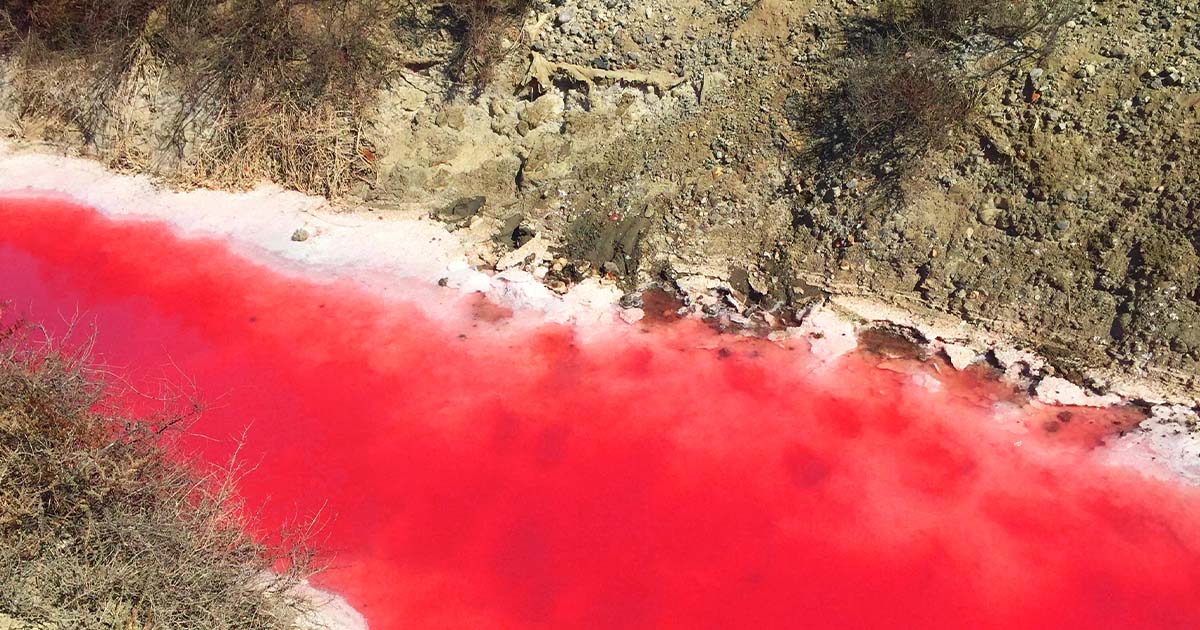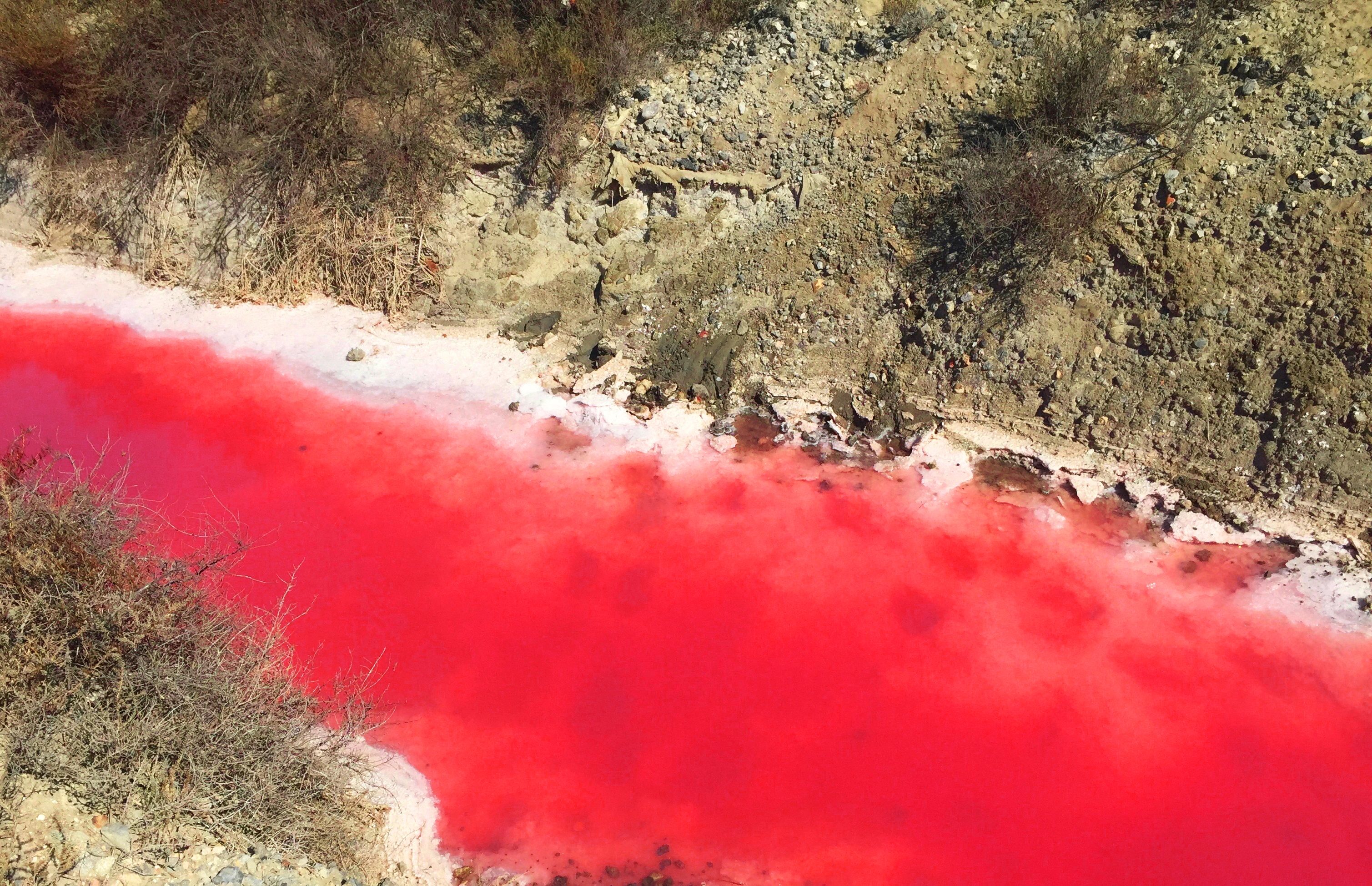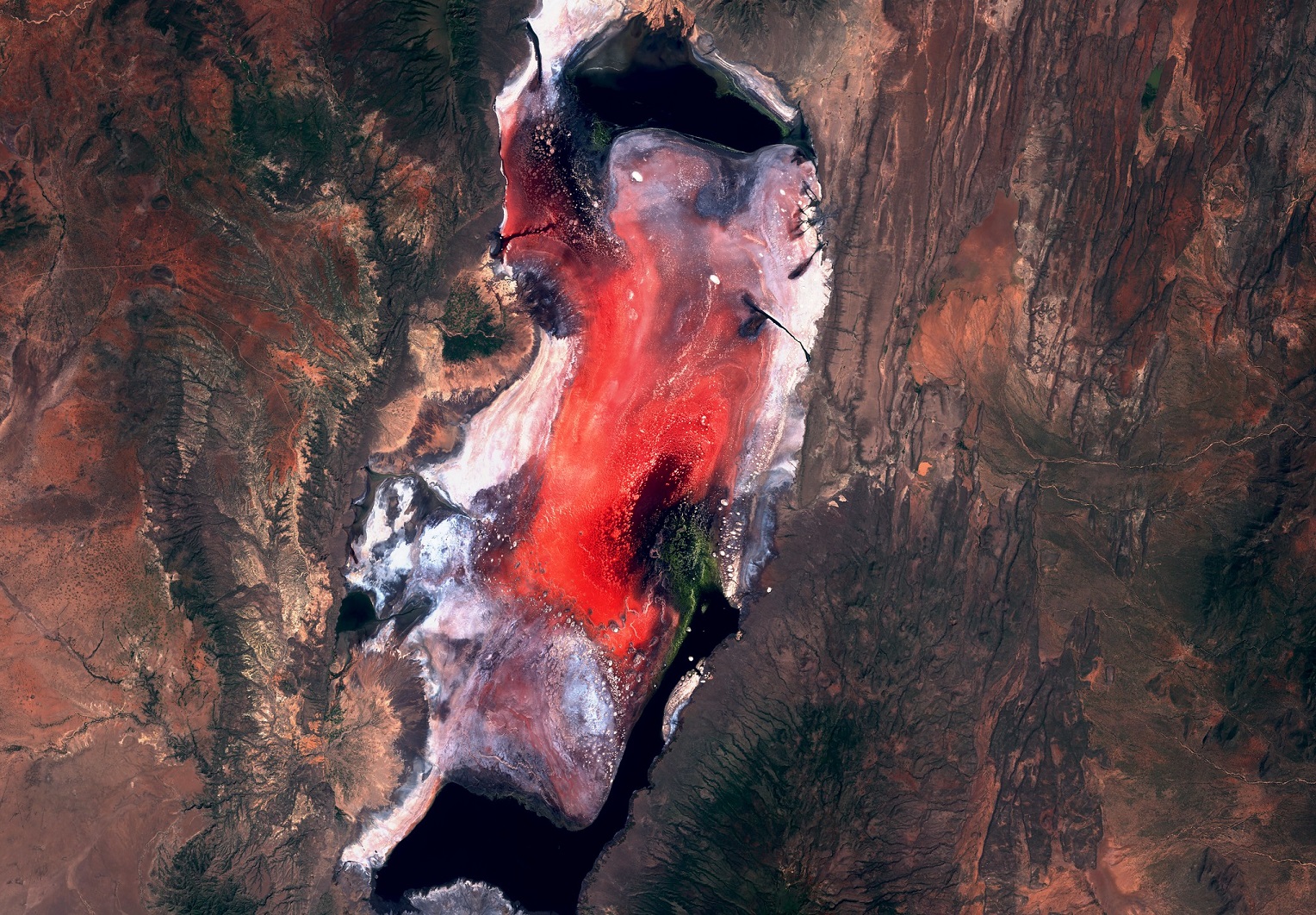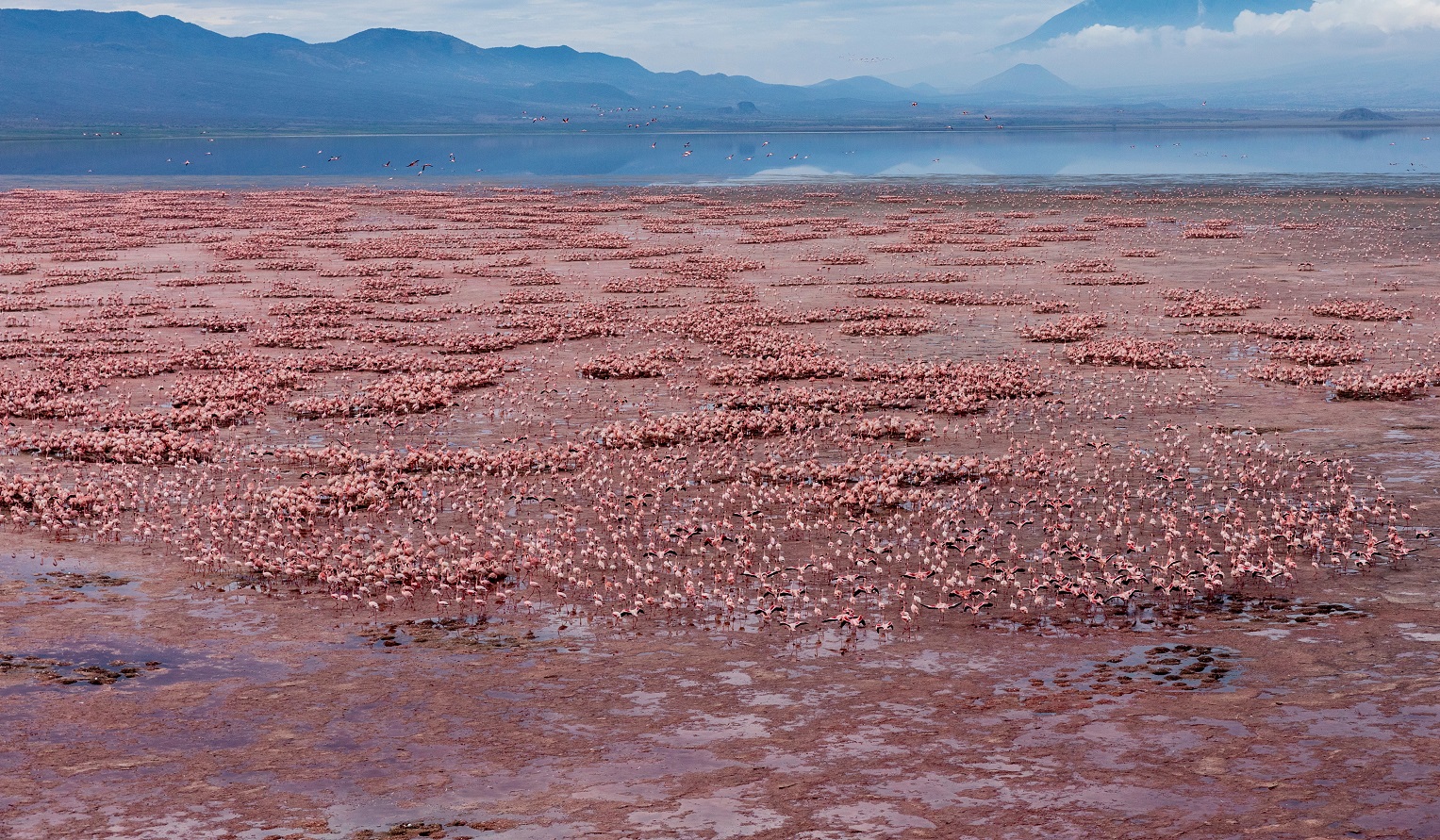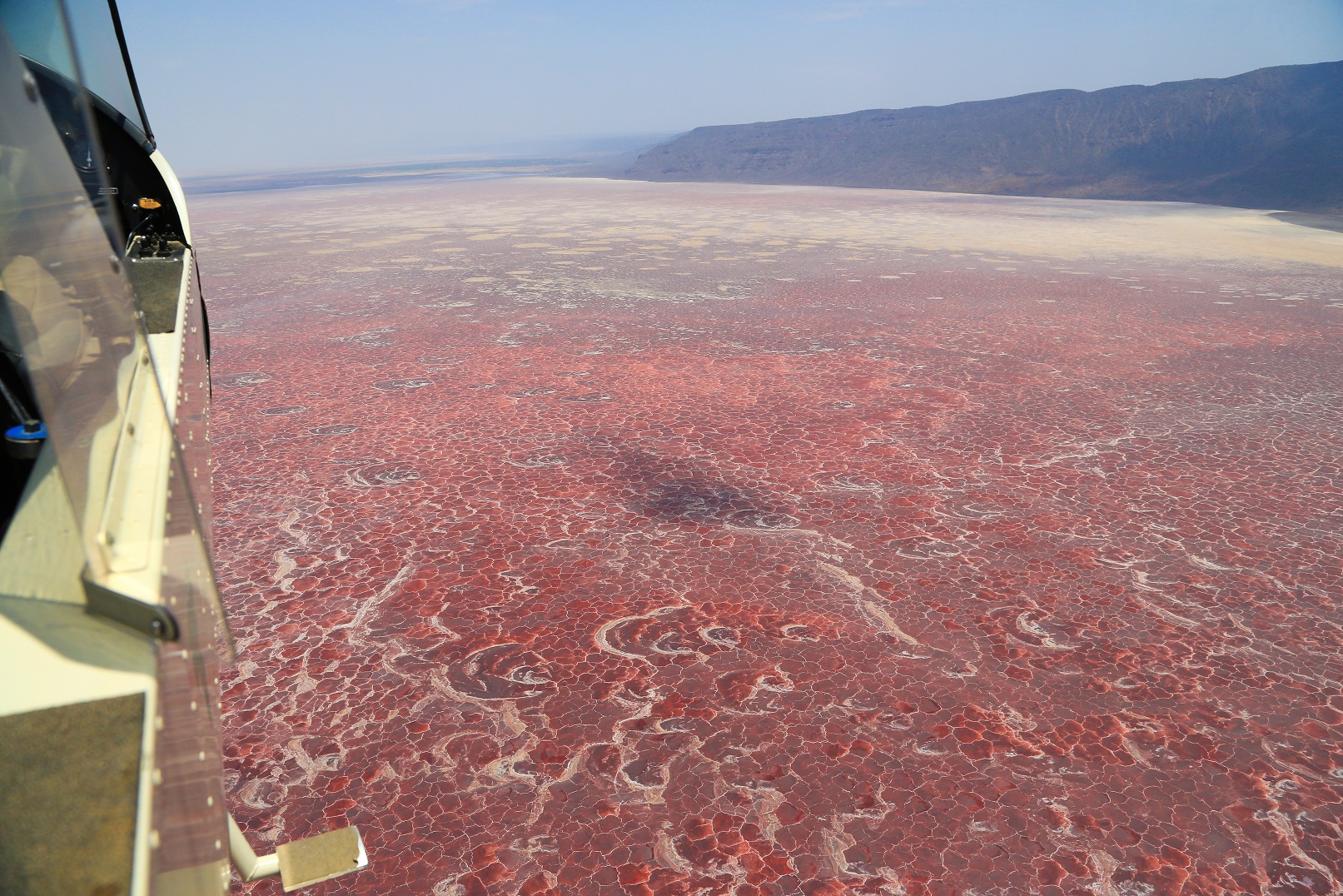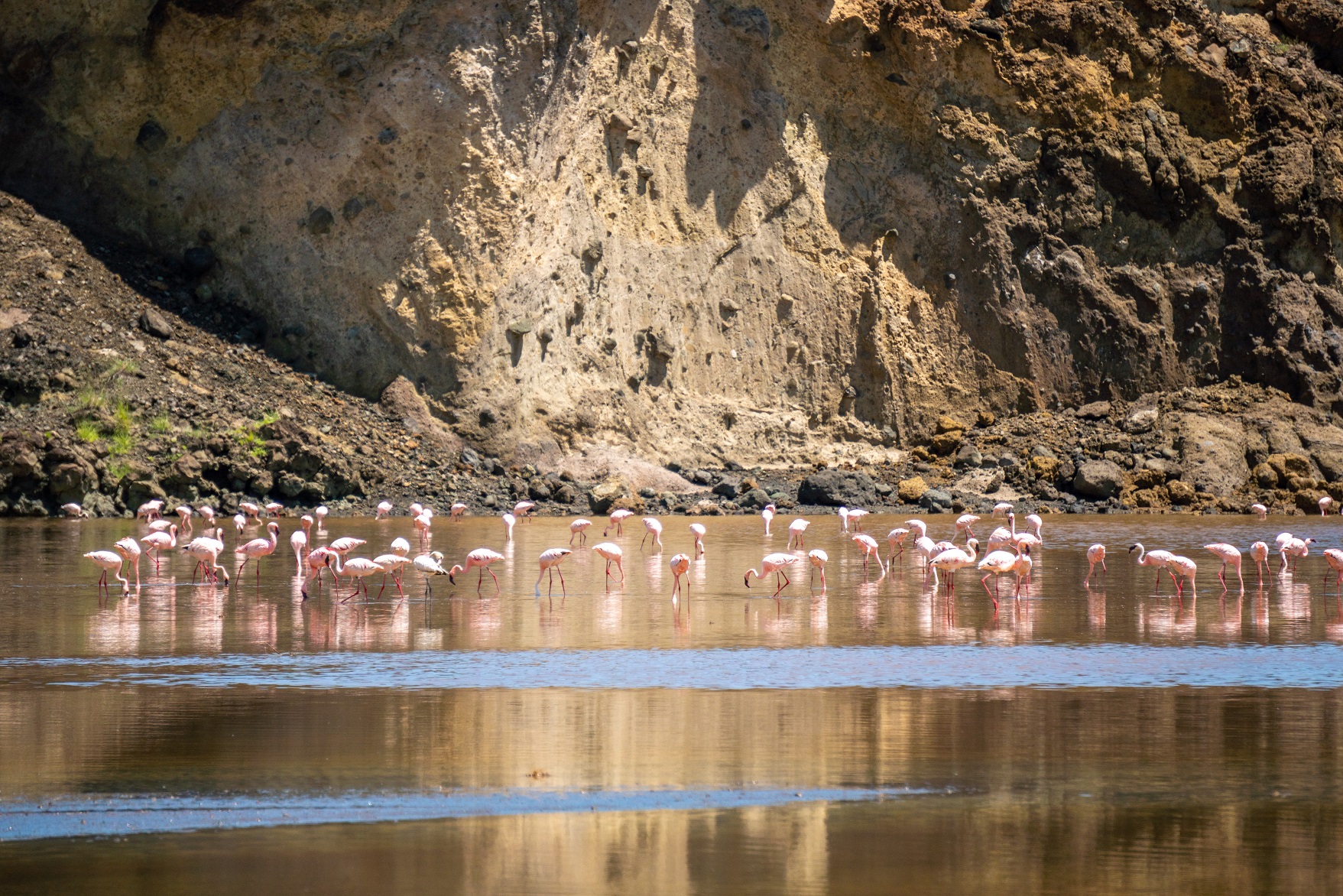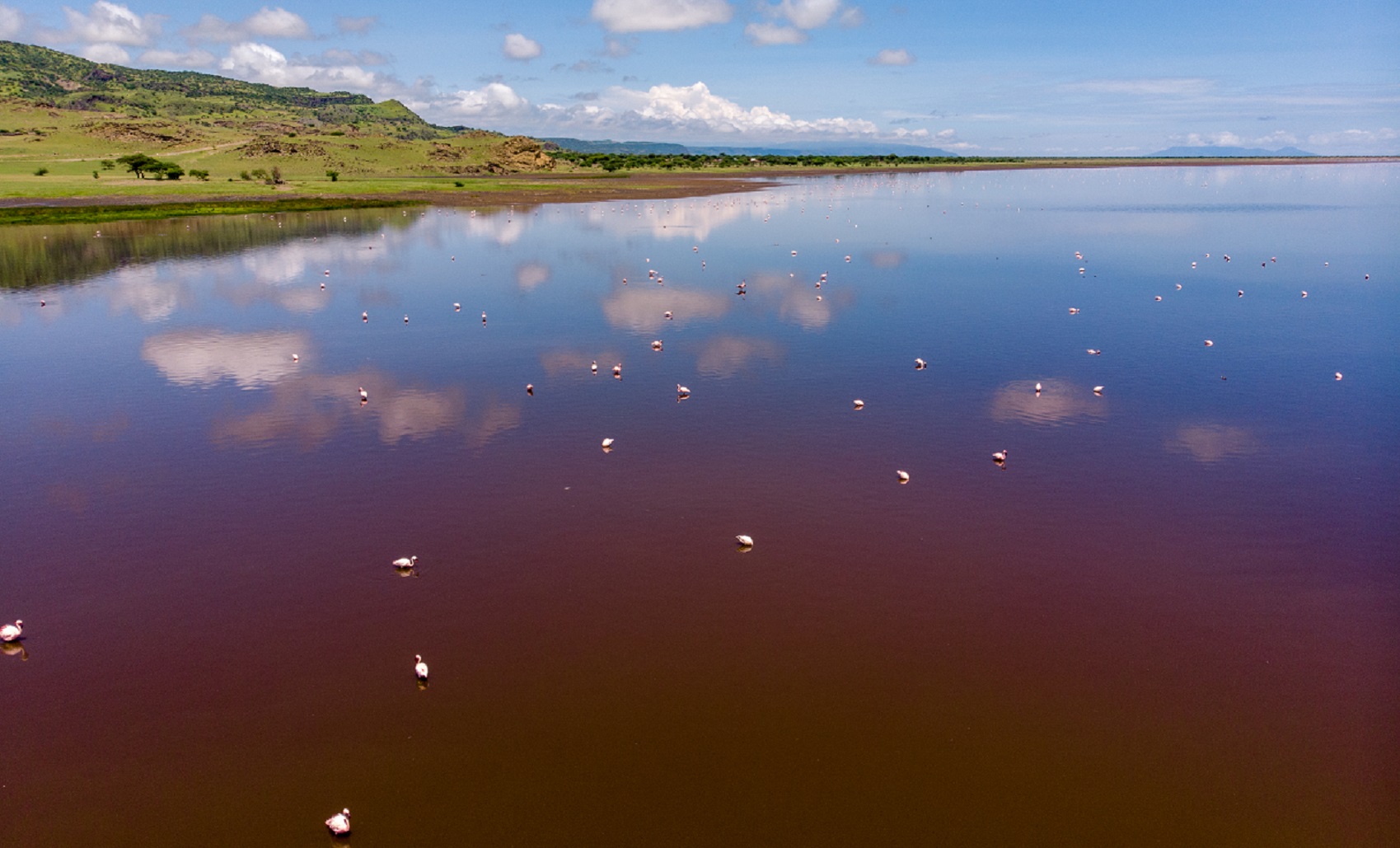Lake Natron
In North Tanzania, there is a beautiful lake with a deadly power. Sometimes called “The Lake of Fire”, Lake Natron is an alkaline lake that has become an intriguing attraction for experts and analysts all over the world.
The crimson water—as beautiful as it may be—is a warning to stay out. But why?
Let’s dive deeper into one of the world’s deadliest lakes.
The Location
Lake Natron is located in north Ngorongoro District of Arusha Region in Tanzania at the border with Kenya. It is within the Lake Natron Basin, a Ramsar Site wetland of international significance.
The lake is mostly fed by the Southern Ewaso Ng'iro River and by mineral-rich hot springs.
Lake Natron is very shallow, less than three meters deep (9.8 ft), and is 22km wide.
The Water
Lake Natron is a very visible red color, which is what catches people’s attention before anything else.
It is also extremely dangerous due to its chemical composition. It is a hypersaline and highly alkaline lake. The alkalinity of the lake can reach a pH of greater than 12.
The Cause
Lake Natron sits below an active volcano that lets out alkali-rich natrocarbonatites. With the help from rain water and nearby hot springs, the flow of lava releases natron—a mix of sodium carbonate and sodium biocarbonate—and it makes it way into the lake below. This is what creates the high pH levels.
The red color comes from blooms of haloarchaea, a salt-loving microorganism that thrives in the hot temperatures of the water.
The Deadly Power
So, what exactly can this lake do?
The chemical properties of the water are known to calcify anything that touches it—usually animals stuck in the lake—turning them to stone.
This is a similar process to that of the Egyptian’s mummification process—which also used sodium carbonate. This means it would likely affect living humans in a similar way.
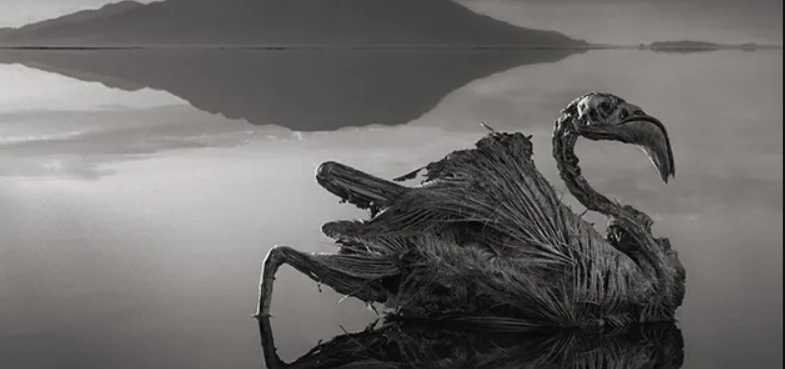 Nick Brandt 2013, Courtesy of Hasted Kraeutler Gallery, NY
Nick Brandt 2013, Courtesy of Hasted Kraeutler Gallery, NY
Human Skin
What would happen if a human took a dip in Lake Natron?
Well, first of all, human skin is soft and squishy, much different than most animals that do survive the area, so the effects of the lake wouldn’t take too long to kick in. There are a few things that could be harmful to human skin.
The extremely high temperatures would be the first problem. Temperatures at Lake Natron can reach a whopping 140 F, which would burn you in seconds.
Then there are the sharp clumps of salt that lie along the bottom, that would slice through your skin with ease.
And finally, there’s the salty, high-alkaline water that would burn your skin the longer you linger.
Submerged Human Skin
Now, if your body were to stay submerged in the water for a long period of time, the water would stop the decomposition process—meaning you’d be preserved.
If the water were to evaporate enough to expose your body, it would be no different than the animals—turned to stone.
It is highly suggested that you stay out of the water if visiting this lethal lake.
Animal Life in Lake Natron
Not all animals can survive the deadly waters of Lake Natron, but believe it or not, there is one animal that thrives in it—the Lesser Flamingo.
More than 2.5 million endangered Lesser Flamingos breed at Lake Natron. Seventy-five percent of the world’s population are born here.
The flamingoes are drawn to this spot because it is essentially a predator-free zone, given that very few species could survive the water. Their tough, scaly skin can withstand the temperatures and rough beaches, and they feed on the microorganisms that live in the water.
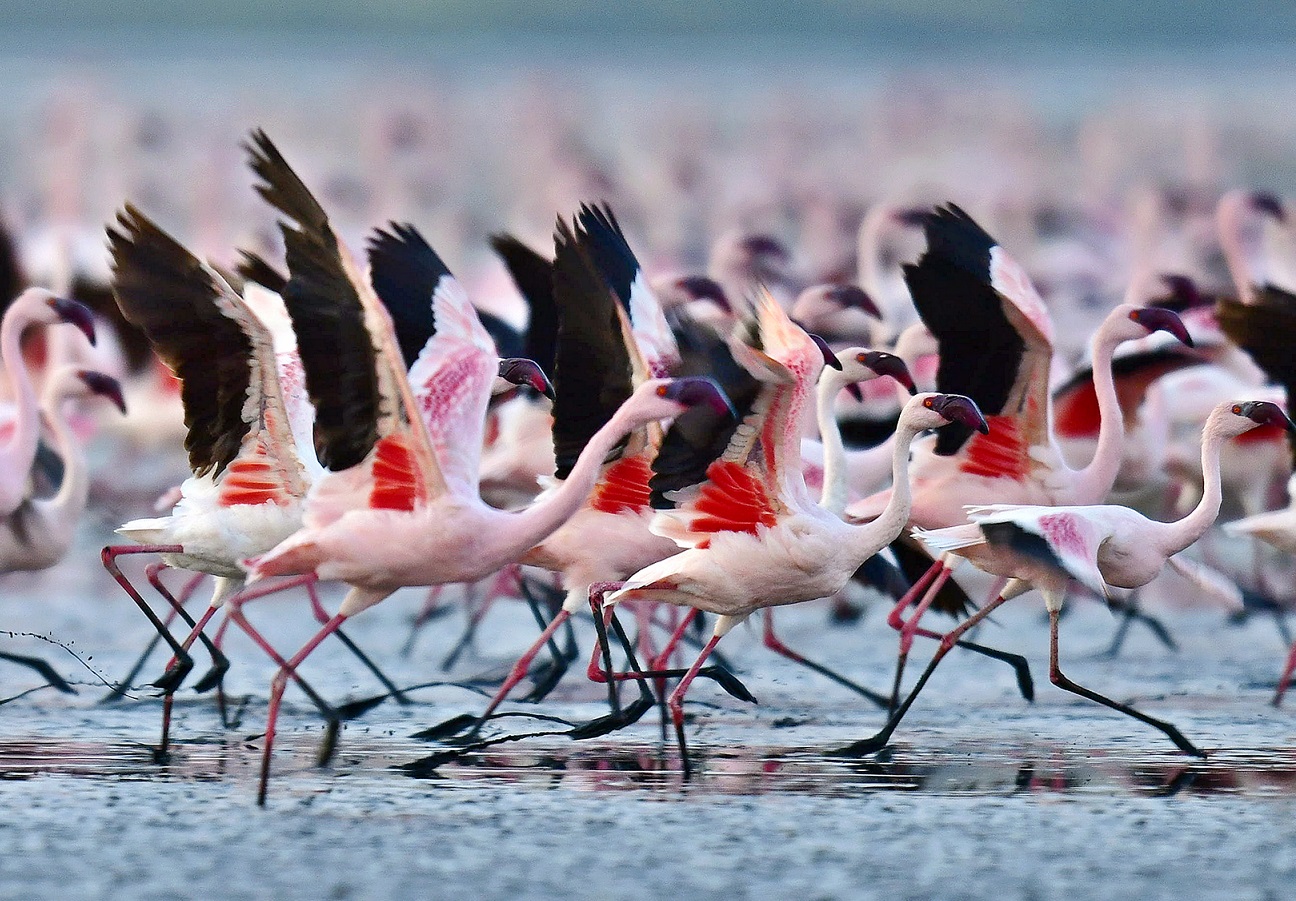 Sergey Uryadnikov, Shutterstock
Sergey Uryadnikov, Shutterstock
Incidents at Lake Natron
In 2007, a helicopter carrying eight members of a wildlife documentary crew crashed into Lake Natron. They were filming the flamingoes for an African wildlife documentary.
The helicopter was flying at a very low altitude, and had only been hovering over the lake for a few minutes when the pilot dipped a little too low, catching the water with one of the landing skis.
Instantly, the helicopter plunged nose-first into the shallow lake, breaking apart and sending the crew members flying into the hot, acidic water.
The crew members report feeling instant burning sensations in their eyes, experiencing impaired vision as they struggled to make their way to shore.
Most people made it out and went back in to drag out the pilot and another member who suffered more extensive injuries. Women and children from the local Masai tribe helped everyone get to safety.
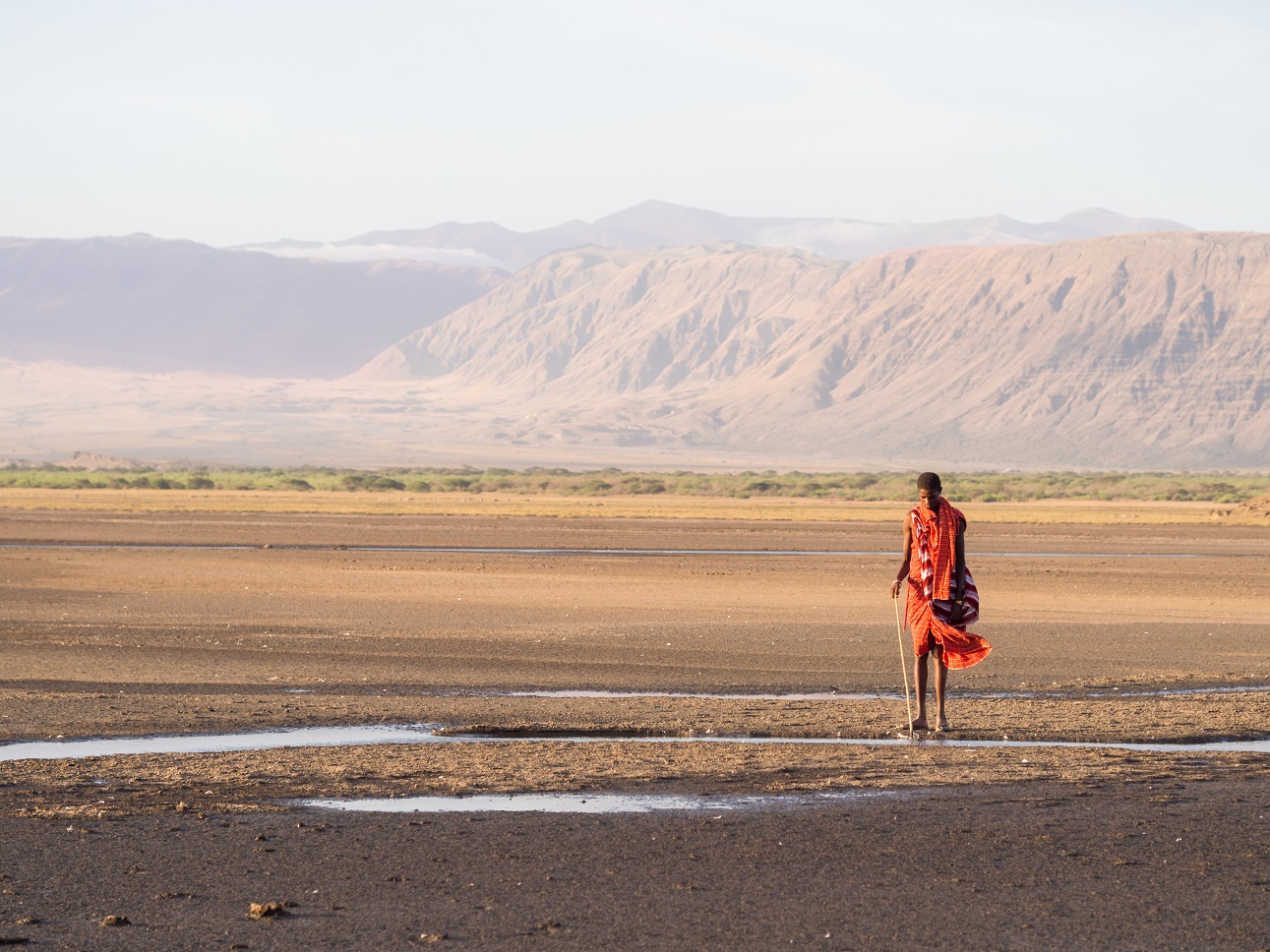 Magdalena Paluchowska, Shutterstock
Magdalena Paluchowska, Shutterstock
Final Thoughts
Lake Natron is a remarkable but perilous natural wonder.
Despite its dangers, it is considered a niche destination for travelers interested in unique and extreme natural environments, wildlife photography, or scientific research.
While it may not attract mass tourism, the lake's stark beauty, mineral formations, and the opportunity to witness lesser flamingos in their natural habitat can be appealing to a certain segment of adventurous travelers.
However, due to its harsh conditions and remote location, visiting Lake Natron typically requires careful planning, appropriate gear, and a sense of adventure.

